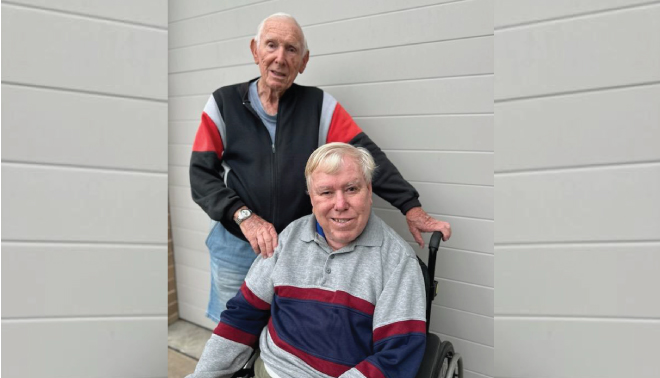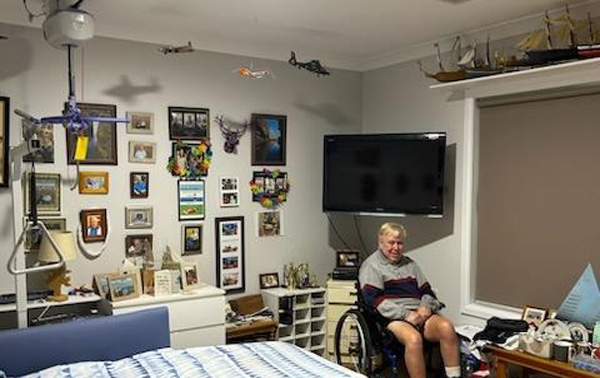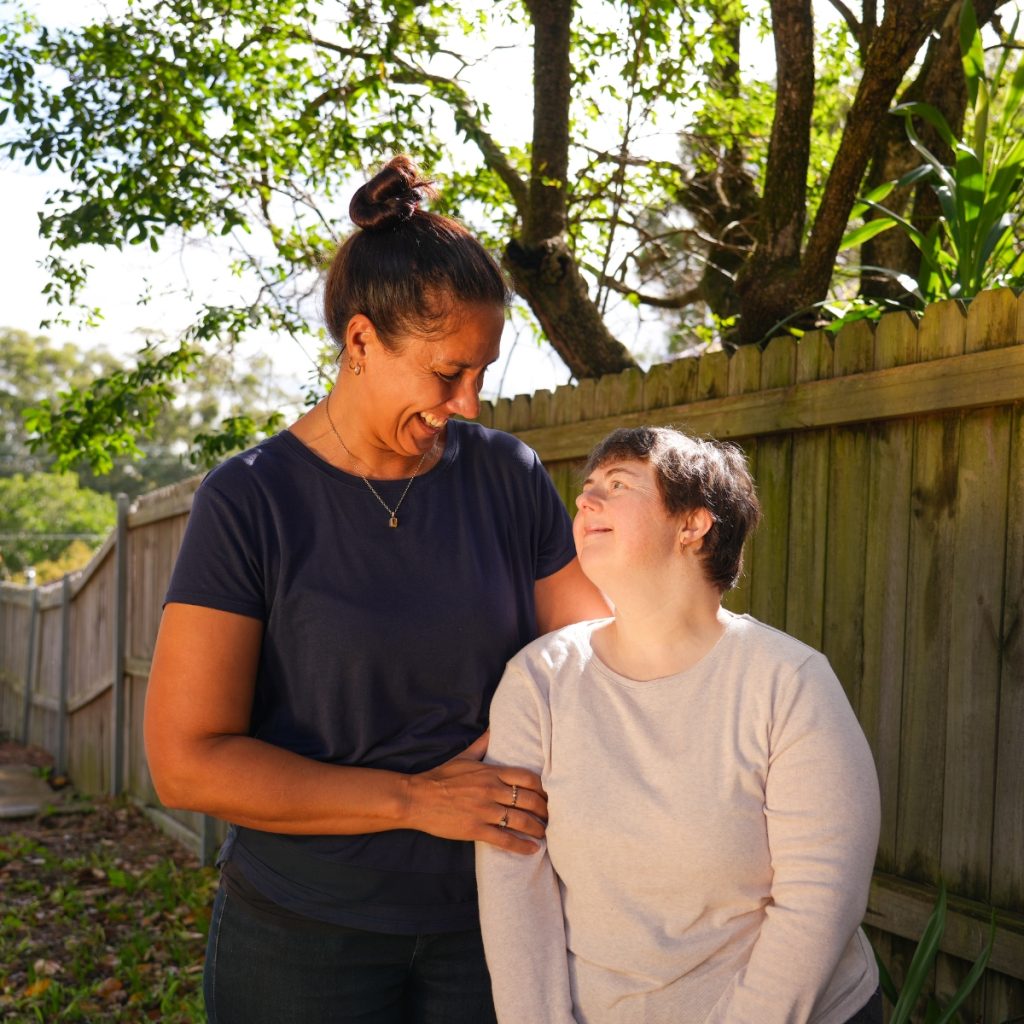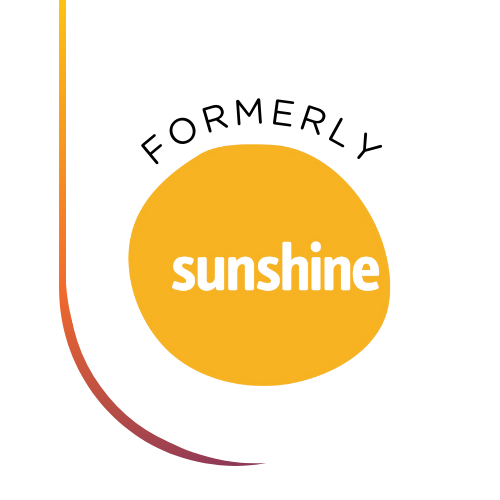Malcolm is in his early sixties. For the past 10 years he has lived in one of Unisson’s supported independent living (SIL) homes on the Central Coast. Prior to this, Malcolm was one of thousands of younger people with disability in Australia residing in residential aged care.
Born and raised in Nowra, Malcolm and his family moved to the Central Coast when, as a young man in his thirties, a series of surgeries to address his severe epilepsy had left him with an acquired brain injury and paralysis down one side. At that time, almost two decades before the introduction of the National Disability Insurance Scheme (NDIS), there were few supported living options for Malcolm. After many months in a hospital recuperating from surgery, with impaired functionality and requiring the use of a wheelchair, Malcolm was placed in residential aged care.

Malcolm’s family has always been very supportive. He spent around 17 years in aged care, and for the first 7-8 years, he shared a room with three people at a time, who were mostly in their final stages of life. It was difficult for the family to witness the situation, with Malcolm’s father Eric describing how staff at the aged care home would yell at the residents. Determined to do what he could to alleviate the circumstances, Eric visited three times a week to take Malcolm out of the facility.
For the second half of his time in aged care, Malcolm was assigned to a room of his own, which improved things a little, affording him some privacy and access to his own television – which was the only real leisure activity at the facility.
The whole family rallied around Malcolm over those years in aged care. His mother died a few years ago, but his father Eric, his sister and his twin brother are still actively supporting him.
(Photo: Malcolm with his father Eric, who share a close bond)
Eric explained that a key to improving Malcolm’s health lay in engaging a different neurologist, who revised and changed the epilepsy medication. As a result of the new combination of medicines, Malcolm’s epileptic episodes became less frequent and there were physical benefits as well.
In October 2012, as part of the Federal Government’s national YPIRAC strategy, which was introduced to support younger people with disability who were living in aged care to move to suitable housing, Malcolm finally left aged care and moved to supported independent living on the Central Coast, with Unisson. He now shares a two-bedroom unit with one housemate.
A great example of the choice and control Malcolm now has, is when he is supported to complete his weekly grocery shopping. In addition, he has his own bedroom which has been personalised with the woodwork and paintings he has completed over the years, and he enjoys watching his favourite football team from Foxtel in his bedroom. The difference between the choices Malcolm can now make, and the lack of choice he had while living in aged care, is remarkable.
While Malcolm is limited in what he can physically do, he is actively supported by Unisson’s support workers, while still allowing him to maintain his independence as much as possible when it comes to his daily living.
With the establishment of the NDIS in 2015, Malcolm’s opportunities to participate more fully in his community were extended. The goal of the NDIS is to assist participants to build their capacity to do things for themselves, to become more independent. Malcolm is supported to do a range of activities during the week, due to the additional funding.

Malcolm enjoys being an active member of the local Men’s Shed. According to Eric, “Over several years, he has helped make a range of items, including a wooden giraffe and elephant, which he sanded and painted.” Malcolm also likes making models from hobby kits, going for drives, and having weekly visits with members of his family.
Local Unisson manager on the Central Coast, Deb Nancovski, was a support worker at the Unisson SIL home when Malcolm moved to his new home 10 years ago. She recalls, “I was there the day he moved into the SIL home. I remember mentioning to Malcolm that there was a place he could go dancing on a Thursday night, and I took him there one night so he could see if that was something he would enjoy. Malcolm has been going along to the venue ever since. The only time he didn’t attend was during the Covid lockdowns.”
According to Eric, “Malcolm has improved immensely since moving to the SIL home. Unisson support workers take him to the theatre, which he loves, to a local venue for Thursday night dancing, and to a Men’s Shed. None of this was available in the nursing home. All these things have been made possible through the NDIS. Overall, Malcolm’s lifestyle is 100% better now.”
(Photo: Around Malcolm’s room are examples of the many creative works he has produced over the last 10 years)
In recent years, Malcolm has been able to travel, including overseas, supported by his family, and he wants to continue to travel around Australia. He prefers to travel by himself, rather than in a group, and is accompanied by a support worker.
It’s fair to say that Malcolm’s life has been transformed over the past decade. According to Eric, “If it wasn’t for SIL, it would have meant a further 10 years for Malcolm in a nursing home, which would have been like being in prison.”






